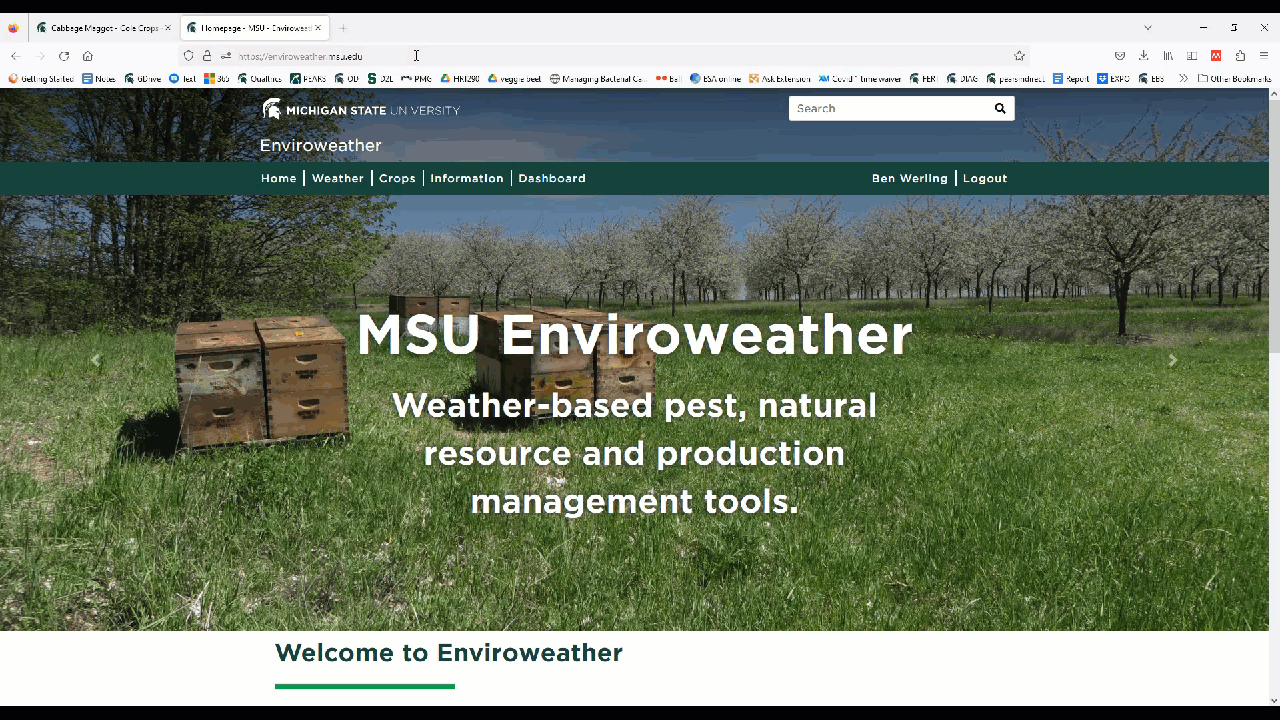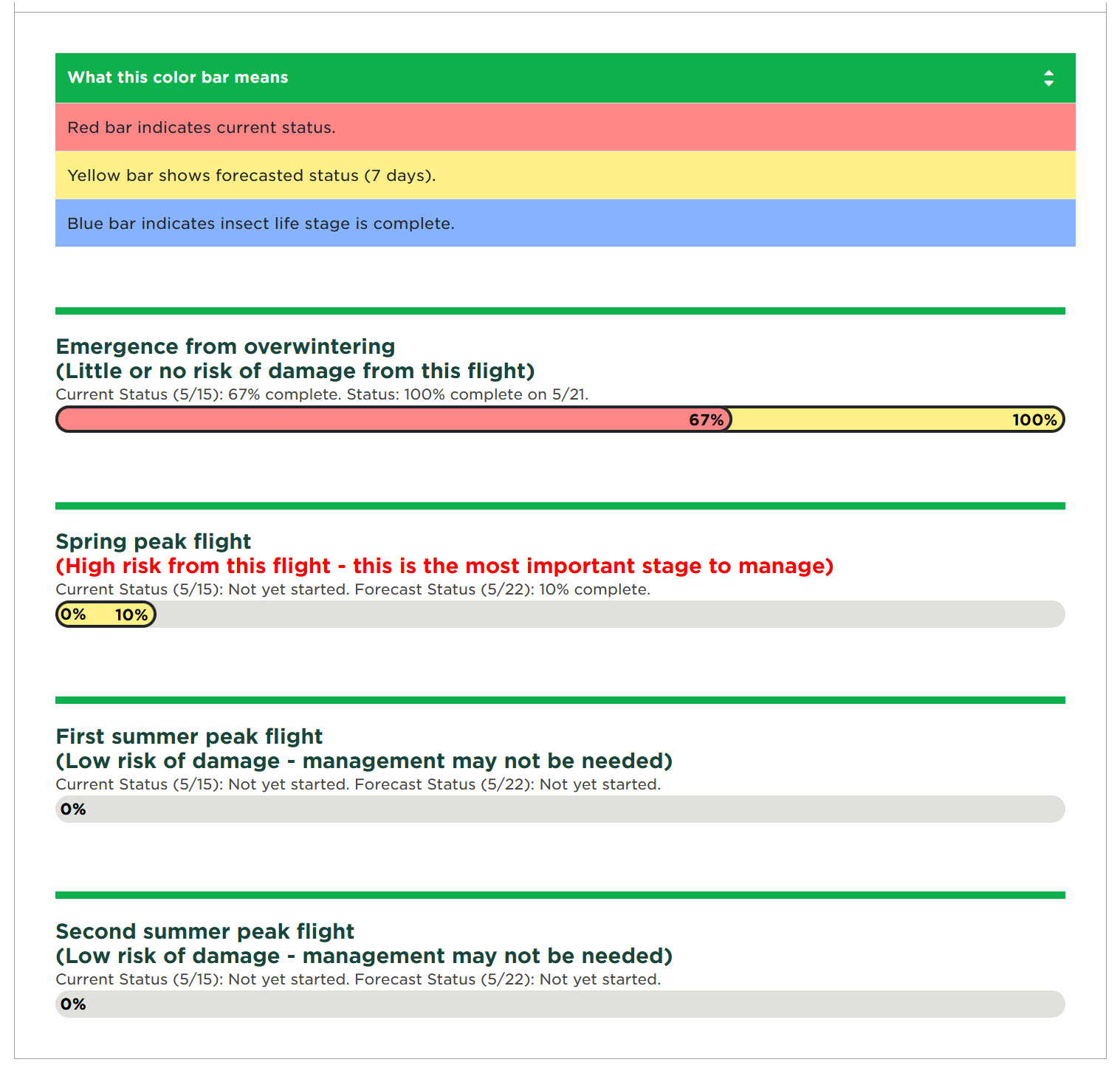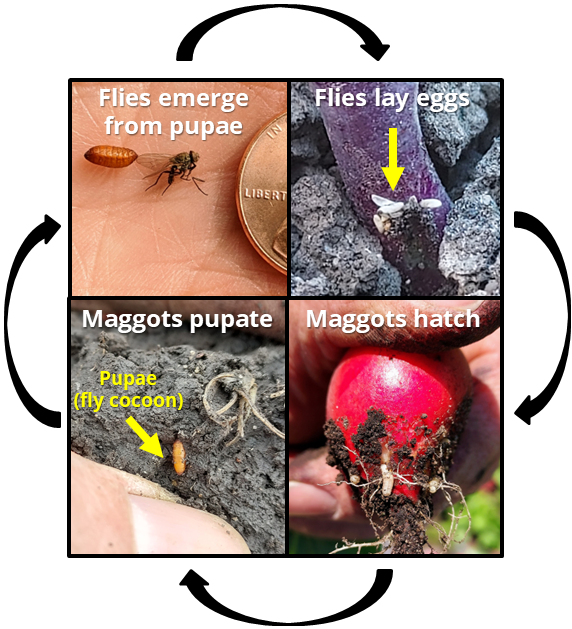Track cabbage maggot progress with Enviroweather’s degree day forecaster
New Enviroweather tool for timing cabbage maggot management.
The enhanced cabbage maggot degree day model is now online at Michigan State University’s Enviroweather and is ready to help you time sprays for this pesky pest.

Ever watch a progress bar on your computer as you download a hefty file? They help you determine whether you should go get another cup of coffee or stay put and ready for action. Enviroweather's new cabbage maggot model helps visualize degree day totals as progress bars to help you know if a need for action is imminent, with handy color coding that shows where things currently stand and where they’ll be in a week.

There are four bars that represent four critical management events. The first bar is for “emergence from overwintering.” Last fall, maggots munching on brassicas turned into pupae. These pupae survive the winter in the soil. Flies begin to emerge in spring once 300 degree days (base 43 degrees Fahrenheit) accumulate, and initial emergence finishes at a total of 564 degree days. Once the total hits 564, this first bar will turn blue and show 100% progress, indicating this stage is complete. Keep an eye out for this, as once this bar hits 100% it suggests the next event, spring peak flight, is happening.

The spring peak flight occurs when the majority of flies have emerged from overwintering. This means brassicas are at peak risk for egglaying, making management critical.
Maggots will hatch from eggs laid by the spring flight, eventually pupating and turning into flies, leading to the first summer peak flight. Keep an eye out for when yellow starts showing in this bar, as it suggests the peak will occur in the next seven days.
Flies from the first summer peak will lay eggs that hatch into maggots, which pupate and become the final second summer peak flight. Just like for the previous bar, check the model to see when the yellow bar starts creeping in, as it suggests the second peak is imminent. Flies of the second peak lay eggs, which hatch into a final clutch of maggots. These maggots form pupae in late summer that overwinter, ready to start the cycle again in spring.
Doesn’t make sense or have tips to make it even better? Please provide feedback on the model.
Enviroweather has degree day models to predict activity of a variety of other vegetable pests, including seedcorn maggot, European corn borer and squash vine borer.
This work was funded by Project GREEEN.



 Print
Print Email
Email

